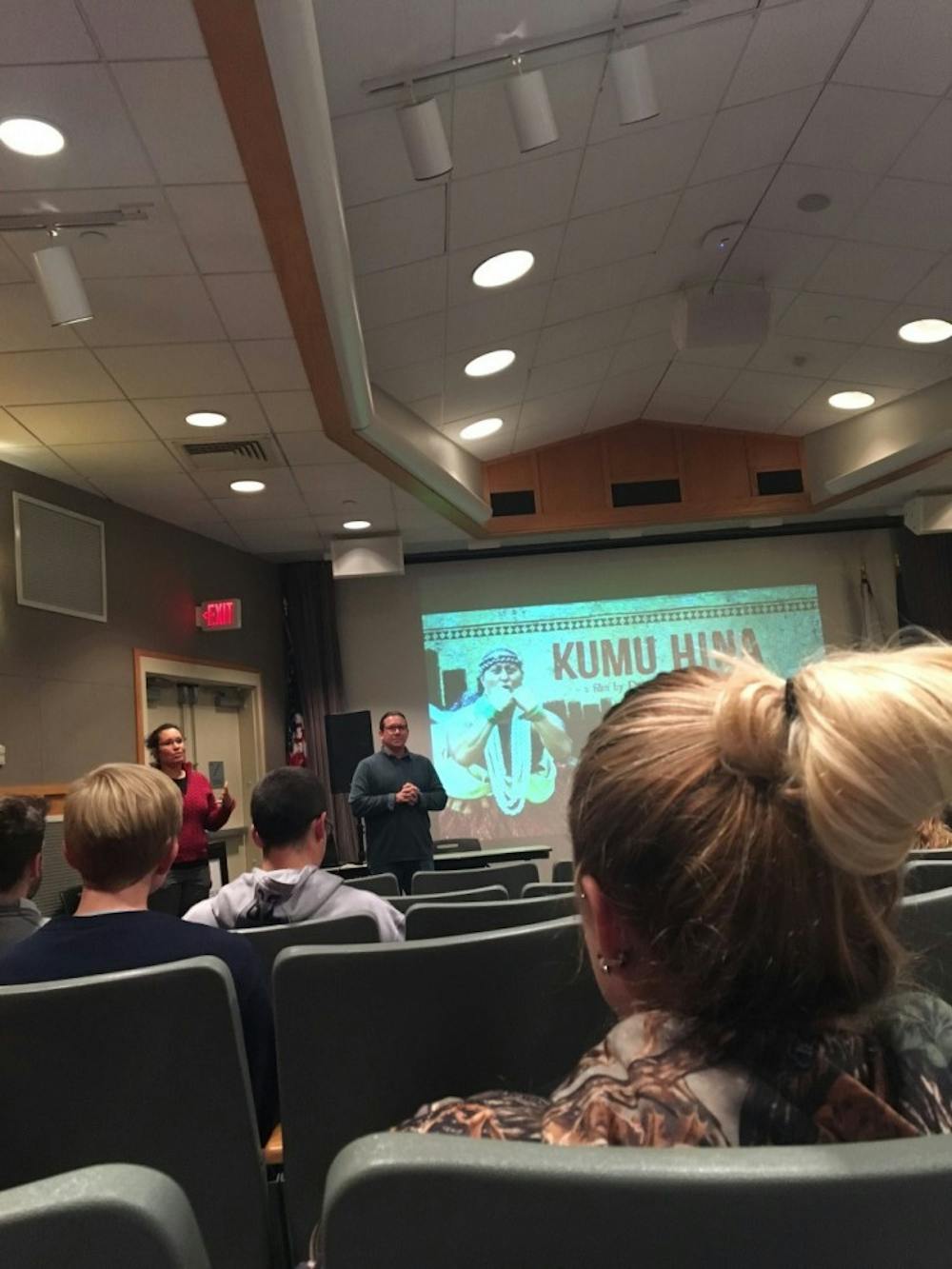Aloha means more than bright leis and grass skirts; the word encompasses unconditional love to all and respect for Hawaiian culture.
On Tuesday, Nov. 1, students gathered in the Orndorff Theatre to view a PBS film titled, “Kumu Hina: The True Meaning of Aloha.”
The documentary opened with the stereotypical scene of Hawaii — palm trees and surfing. Then, it turned to Halau Lokahi Charter School, a Hawaiian culture-learning environment. Students at Halau Lokahi learn to hula and preserve their native heritage.
When American missionaries came to Hawaii in the 1800s, Hawaiian culture was ripped from the hands of the natives and their chants were silenced. Today, they rejoice in their freedom through dancing.
“Kumu Hina” stands for kumu, or dance instructor, Hinaleimoana Wong-Kalu. Hina is a mahu, which is the Hawaiian term for someone who has both male and female characteristics. In ancient Hawaii, mahus were respected highly and seen as the wise caretakers with the best qualities of each gender. Hina’s students were very accepting of her, despite her transgender identity.
One of Hina’s students, Ho’Onani Kamai, is considered to be in the middle, neither male nor female, like Hina. Ho’Onani has tomboy characteristics and likes hanging with the boys. In fact, she joined Hina’s high school boys dance class and was appointed leader.
The film did a good job of showing how people who are transgender do not have to be seen as odd. Both Hina and Ho’Onani are very comfortable in their skin despite being considered different. One of Ho’Onani’s classmates commented that she has more balls than any of them.
The film continually went back and forth between Hina’s experiences and Ho’Onani at the dance rehearsals, allowing the audience to build a relationship between the two.
Another character that appeared in “Kumu Hina” was Hina’s husband, Haemaccelo Kalu. He worried about how others would perceive him and that people would think he was homosexual since he married a mahu. Throughout the film, Hina also struggled with her identity in their marriage. She felt as if she had to play a role as a wife even though she did not want to gender identify.
“I don’t want to be pretentious and pretend when I’m with him, but my natural instincts are to be both,” Hina said when referring to changing her voice around her husband.
Hina contemplated whether it was worth being in a relationship, but in the end, realized the love he gave her was irreplaceable.
“Kumu Hina” closed with the end of the year dance performance. It was neat watching the final product after seeing all that went into it during rehearsals. Hina explained how love is the most important thing and that we should love others despite their religion, gender and differences.
The film screening was sponsored by the Shippensburg University’s LGBTQ+ Concerns Committee. Afterward, Shippensburg University counseling professor Matthew Shupp led a brief discussion on “Kuma Hina” and the topic of being transgender. Shupp explained how the campus inclusion group strives to create dialogue among students through hosting events each month.



The Slate welcomes thoughtful discussion on all of our stories, but please keep comments civil and on-topic. Read our full guidelines here.